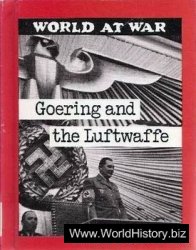Robert F. Schoen and his wife Margaret Ann found Orcas Air Service at Friday Harbor, San Juan Island, Washington State, in early 1947 to provide charter passenger and cargo flights in the Puget Sound and San Juan Islands area. Revenue flights commence on March 29 employing a Stinson 108 Voyager. Early in 1948, flying instructor Roy Franklin joins the company, which is now incorporated with its name changed to Island Sky Ferries. A Cessna is added.
In the spring of 1950, the little carrier is purchased from the Schoens by Dr. Wallace Howarth, who changes its name to Island Air. Franklin and the Stinson remain with the company.
ORD AIR CHARTER, (PTY.), LTD.: P. O. Box 73, Wyndham, Western Australia, 6740, Australia; Phone 61 (91) 611 335; Fax 61 (91) 611 456; Code QN; Year Founded 1989. Ord is established at Wyndham, Western Australia, in 1989 to offer charter and contract service flights to local, mostly bush, destinations. Governing Director Maxine Reid begins and continues services with a fleet that comprises 3 Beech 58 Barons, 1 Cessna 402C, and 1 Pilatus-Britten-Norman PBN-2 Islander.
Operations continue without change over the next decade. During those years, four Cessna 206s are acquired.
OREL AVIA AIRLINES: 3/5 Str 1 Maly Poluyaroslavsky, Pereulok Suite 47-49, Moscow, 107120, Russia; Phone 7 (095) 975-2506; Fax 7 (095) 975-2445; Code R6; Year Founded 1994. Orel Avia is established at Orel in late 1991 to offer executive and diplomatic services. Under the leadership of General Manager Sergei V. Isakov, revenue services are duly inaugurated with 1 each Yakovlev Yak-40 and Yak-42D.
Flights continue in 1992-2000, during which years Tatevos Surinov becomes president, with Isakov as his deputy and Alexander Romanov as managing director. The workforce grows to 63 and the fleet comes to comprise 3 Yak-42Ds. A license to begin scheduled service is sought as medium-range public passenger charters are now undertaken.
ORENBURG AIRLINES (ORENBURG AVIA): Orenburg Airport, Orenburg, Orenburgskaya Region, 460049, Russia; Phone 7 (3532) 331 105; Fax 7 (3532) 479 878; Http://www. cavs. ink. ru/company/ oernburg; Code R2; Year Founded 1992. Originally established in 1932 as the Orenburg division of Aeroflot Soviet Airlines, Orenburg Airlines, also known as Orenburg State Aviation Company (Oren-burgskoe Gosudarstvennoe), is reformed and renamed in 1992 at the same time as many other units of the former national carrier. The large inherited fleet comprises 4 Tupolev Tu-154Ms, 1 Tu-154B, 30 Antonov An-2s, 5 An-24s, and 6 Tu-134As, plus 6 Mil Mi-8 helicopters.
Under the leadership of Director General Boris A. Portnikov, Orenburg initially continues its affiliation with the new Aeroflot Russian International Airlines (ARIA) as it provides domestic scheduled and charter passenger flights from Orenburgskaya Airport. Services continue in 1993-1997, during which years the carrier becomes the first Russian domestic airline to offer through ticketing and to introduce the hub-and-spoke connection concept.
In December 1998, Orenburg launches a Russian-language homepage on the Internet’s World Wide Web. Enplanements during the year total 245,000.
Scheduled destinations visited at the beginning of 1999 include Adler/Sochi, Ekaterinburg, Irkutsk, Khabarovsk, Krasnodar, Mineraliye Vody, Moscow, Nizhni Novgorod, Novosibirsk, Omsk, Samara, and St. Petersburg.
ORENBURG STATE AVIATION COMPANY (ORENBURGSKOE GOSUDARSTVENNOE). See ORENBURG AIRLINES (ORENBURG AVIA).
ORIENT AIR, LTD.: United Kingdom (1991-1994). Chairman/ Managing Director Stuart Andrews founds Orient at Gloucestershire Airport in late 1991. A workforce of 15 is recruited and 2 Piper PA-31310 Navajos are acquired. Scheduled flights begin in late 1992 linking the carrier’s base with Coventry, Waterford, Jersey, and Guernsey.
An Embraer EMB-110P1 Bandeirante is acquired in 1993 and is employed to launch services to Dublin. No traffic or financial figures are available from the privately owned regional, which goes out of business early the following year.
ORIENT AIRLINES, LTD.: No. 19, R-Vithei Preah Mohasat, Tiany Kosomak, Phnom Penh, Cambodia; Phone 855 (23) 426 248; Fax 855 (23) 426 313; Code XE; Year Founded 1995. Established in Thailand in 1992, Chiang Mai-based Cambodian International Airlines,
Ltd. is grounded in December 1994 by its owners, Siam Kampuchea and the Cambodian government, in order that the latter might launch Royal Air Cambodge.
Early in 1995, the dormant carrier is divided in two. One division is renamed Orient Airlines, Ltd. and its headquarters are transferred to Phnom Penh, while the other becomes Orient Express Air, Ltd. Udom Tantiprasonchai remains CEO of the latter and a director on the board of the former, where Dr. Emmanuel Iwuanyawu becomes chairman, with Ray Megwa as general manager.
OA is outfitted with 1 each B-727-225 and B-727-227A and is permitted to resume international scheduled services on 20 routes from Bangkok and Chiang Mai. These schedules are maintained during the remainder of the decade and into the new millennium.
ORIENT AIRWAYS, LTD.: Pakistan (1946-1953). Quaid-i-Azam Mohammed Ali Jinnah, leader of the Muslim League and Pakistan’s founder, initiates the incorporation of this enterprise during a February 1944 meeting with Habib Rahimtoola. A plan is put forward to establish a civil airline, which, like the old Deutsche Luft Hansa, A. G., can also act as a reserve military pilot training organization. After VJ-Day, Merza Ahmad and Merza Abol Hassan Ispahani, members of the wealthy Calcutta-based textile mercantile Ispahani family and Muslim League sympathizers, establish and register OAL on October 23, 1946.
Equipped with several war surplus Douglas C-47s (military DC-3s) and Beech 18s, the company, under the leadership of Managing Director Rafi Ispahani, begins flying from Calcutta and Rangoon via Chittagong and Akyab on June 30, 1947. On August 1, company headquarters are transferred to Chittagong and on August 14, Pakistan is founded. On September 18, the carrier is ordered by the government to provide those air services necessary to link the country’s two wings.
Special services are operated to East and West Bengal during the refugee exodus of September and October. Karachi-Dacca DC-3 flights begin on October 1 via Delhi and Calcutta. Dacca to Calcutta and Chittagong direct services commence the same day, while Akyab is dropped as a stop on the Rangoon route. On October 2, two more DC-3 routes are inaugurated: Karachi to Peshawar via Lahore and Rawalpindi and Karachi to Lahore via Quetta. A Karachi to Lahore direct frequency is initiated on November 5.
The operating base and company headquarters are transferred to Karachi from Chittagong on January 2, 1948. DC-3 Karachi-Bombay services are started in the spring. By year’s end, the company is operating 20 Douglas transports.
On February 12, 1949, two DC-3s fly supplies from Peshawar to Skardu via Gilgit on behalf of the Ministry of Defence. Becoming the first Asian Convairliner operator, OAL, on May 1, introduces three pressurized Convair CV-240s on its Karachi to Dacca via Delhi and Calcutta route. During the summer, the Quetta to Lahore segment of the Karachi to Lahore service is withdrawn.
On August 12, 1950, Karachi to Calcutta via Lahore, Delhi, and Dacca, flights start. As a result of terrible flooding in Punjab, the company launches mercy flights, ferrying in supplies and transporting 3,216 passengers. The Karachi to Bombay service is suspended on December 8.
On August 3, 1951, DC-3s begin flying from Karachi-Lahore via Multan, but on September 15 the company is forced to suspend two routes because of a gasoline shortage. On November 15, a new multistop Dacca to Jessore frequency is introduced.
The company participates in an all-up mail program between East and West Pakistan that begins on April 1, 1952.
A DC-3 freighter with three crew en route from Karachi to Dacca, crash-lands at Jamshedpur, India, on October 22 (one dead).
While en route from Delhi to Dacca on March 14, 1953, a CV-240 with 5 crew and 11 passengers disappears. The wreckage is found two days later on a mountain S of Kalahasahar, near Tripura, India; there are no survivors.
Dacca to Chittagong flights are suspended on May 11. A chartered DC-3 with four crew and a passenger en route to Mecca, fails its climb from Sharjah, UAE, on August 2 and makes a forced landing (one dead).
On October 1, the carrier is taken over by the government and, though allowed to continue under its previous name, is made a subsidiary of Pakistan International Airlines Corporation, still a paper organization.
CV-240 service is launched thrice weekly from Karachi to Bombay on December 13, 1954. After suffering engine failure, a DC-3 with three crew and eight passengers makes a forced landing near Skardu, Pakistan, on October 13; although the Douglas must be written off, there are no fatalities.
On March 11, 1955, Pakistan International Airlines Corporation (PIA) comes into being by act of Parliament and officially assumes the assets of OAL, including its two Convairliners and 11 DC-3s.
ORIENT AVIA: Russia (1994-1997). Orient Avia is set up at Moscow on July 13, 1994, to provide scheduled nonstop roundtrip passenger flights to Vladivostok and other points in the Russian Far East. Shareholding is divided between Aeroflot Russian International Airlines (ARIA), Kazanskoe, Sea Trading Port of Vladisvostok, Dalvemo, Nakhodka, and the Far East Shipping Company.
Amiran G. Kurtanidze is appointed general director and he begins revenue services from Moscow and St. Petersburg to Vladivostok on September 27 with 3 Ilyushin Il-62Ms.
Plans to offer charters to Turkey and various Mideast destinations are unrealized in the face of stiff competition from foreign carriers.
Traffic figures for the first quarter of operation total 11,000 passengers carried.
New routes are inaugurated in 1995 to Pattaya, Magadan, and Petropavlovsk. In December, weekly return flights are inaugurated to U-Tapao, Thailand.
As a result, passenger boardings accelerate to 95,800 and 6.68 million FTKs are operated.
Charters to Hourgada, Egypt, along with many other worldwide points begins in 1996 and destinations visited by the end of the year include Bangkok, Brest, Ho Chi Minh City, Jujno, Kamchatskiy, Kaunas, Kiev, Kishinev, Lvov, Petrozavodsk, Sanky, Sakhalinsk, San Francisco, Singapore, St. Petersburg, and Vladivostok.
During the fourth quarter, a homepage is opened on the Internet’s World Wide Web. Experiencing fiscal problems, traffic figures are no longer revealed.
In early 1997, permission is sought and won to begin nonscheduled flights to Hawaii. Overextended, the company suspends operations on July 10.
ORIENT EXPRESS AIR, LTD.: 101/199 Kungkloonchonpritham Road, Baan Nai Fan, Chiang Mai, 50100, Thailand; Phone 66 (53) 320 1567; Fax 66 (5) 320 1565; Code OX; Year Founded 1995. Originally set up in 1992, Chiang Mai-based Cambodian International Airlines, Ltd. is grounded in December 1994 by its owners, Siam Kampuchea and the Cambodian government, in order that the latter might launch Royal Air Cambodge.
Early in 1995, the dormant carrier is divided in two. One division is renamed Orient Airlines, Ltd. and is transferred to a base at Phnom Penh. The other, remaining at Chiang Mai, becomes Orient Express Air, Ltd. Udom Tantiprasonchai remains CEO of the latter and a director on the board of the former.
OEA is licensed to operate Thai domestic routes that bypass the capital of Bangkok. To this end, revenue flights commence with 1 each B-727-225, B-727-227A, and B-737-2E1, all purchased.
Airline employment stands at 120 in 1996 as the company flies over a network of 20 routes leading outward from Chiang Mai and now Bangkok. A Lockheed L-1011-1 TriStar 1 is acquired to help provide lift.
It is announced on May 13, 1997 that the carrier will sell space on its planes’ sides for ads in a program reminiscent of the “logo jets” of the U. S. carrier Western Pacific Airlines (Westpac).
Meanwhile, across the border in Cambodia, Kampuchea Airlines (2) comes to life on August 1. Yin Chan is appointed CEO and a 40% stake is sold to Orient Express Air. Orient’s CEO Udom Tantiprasongchai now also serves as Kampuchea’s managing director as well, and arranges for the lease to KA-2 of an Orient Lockheed L-1011 TriStar 1 with which to resume service.
Financial losses due to the nation’s currency problem require the company to cease scheduled flights on January 9, 1998. The company continues to operate charters. In November, the Lockheed is leased to Merpati Nusantra of Indonesia.
Scheduled operations to its previous charter points are offered by Kampuchea Airliness (2) in 1999 and a second Orient Express Air TriStar is briefly dedicated to that company’s schedule. Unhappily, the impact of the Asian financial crisis continues to be felt and these new regularly offered flights are not profitable. As the year ends, the Cambodian company joins its Thai associate in offering charters only. Despite hard times, both airlines are able to survive into the new millennium, and are even able to lend a helping hand to another regional company in trouble.
Losing some 20 million baht ($500,000) a month, Thailand-based Angel Airlines Company, Ltd., on June 1, 2000, stands down for 30 days as it is reorganized.
The sublease of a Lockheed L-1011 TriStar 1 from Kampuchea Airlines (2) allows Angel to announce that daily flights to Hong Kong will resume on July 15. Despite the formulation of a rescue plan, Angel teeters on the brink of collapse by mid-July. The announced Hong Kong TriStar service is initially cancelled, but begins on July 22.
As the regional financial picture begins to brighten during the summer, Managing Director Udom announces at the end of July that his company has placed orders for four additional L-1011s, the first of which will be delivered by fall. It is anticipated that at least two of the aircraft will operate long haul charters to Europe. Meanwhile, negotiations are underway with the CAAC in Beijing for authority to operate charters to five cities in mainland China.
It is reported on October 8 that Angel will sign a new marketing and code-share agreement with China Northern Airlines Company, Ltd. Under its terms, the previous TriStar lease will end as CNA provides a pair of Airbus Industrie A300-600Rs in November with which to operate Angel’s domestic and international routes from Bangkok.
ORIENTAL AIRLINES, LTD.: 3A Abimbola Awoniyi Street, P. O. Box 75543, Victoria Island, Lagos, Nigeria; Phone 234 (1) 83 1108; Fax 234 (1) 83 3037; Code OAC; Year Founded 1990. Oriental is established at Lagos in 1990 to offer regional passenger charter and inclusive-tour flights. Revenue operations commence and continue with a single British Aerospace BAe (BAC) 1-11-501EX.
Flights continue over the next 7 years as the workforce grows to 85. The fleet by 1991-1994 includes 2 BAe (BAC) 1-11-509EWs and 1 each BAe (BAC)-476FM, BAe (BAC)-501EX, BAe (BAC)-515FB, and BAe (BAC)-523FJ. Destinations visited on a scheduled basis include Abuja, Enugu, Owerri, and Port Harcourt.
Operations must be suspended for several months at the beginning of the latter year. The newly delivered BAC 1-11-515FB with 39 passengers is destroyed as the result of a bad landing at Tamanrasset, Algeria, on September 18 (4 dead).
As is the case with other Nigerian private carriers, operations are a downturn in 1995-1998. By the latter year, a number of the BAC 1-11s are out of service and charters are being provided by 1 each Letov Let-410UVP and Lockheed L-1349 Jetstar.
With the coming of the new democratic government, the company’s situation greatly improves in 1999-2000. During the latter year, the workforce of Managing Director Chief Emmanuel Iwuanyawu reaches 85.
ORIENTAL PEARL AIRWAYS (PTY.), LTD.: Hong Kong (19711977). Led by Executive Director Thomson Chiu, a group of Hong Kong businessmen form Oriental Pearl in March 1971 to operate allcargo charters from the British crown colony to various destinations in Asia. Employing 2 Douglas DC-6Bs, the carrier undertakes services during the summer.
Unable after six years to find sufficient traffic to stay aloft, the company goes bankrupt and ceases services in 1977.
ORIGIN PACIFIC AIRWAYS, LTD.: P. O. Box 7022, Trent Drive, Nelson, New Zealand; Phone (03) 547-2020; Fax (03) 547-6760; Http://www. originpacific. co. nz; Code OGN; Year Founded 1996.
Origin Pacific is established by Robert Inglis, owner of Iglis Aircraft Company, Ltd., at Nelson Airport in New Zealand during the fall of 1996. Inglis plans to offer corporate and group travel charter flights, as well as scheduled frequencies, to destinations on both the North and South Islands. A Cessna 421 Golden Eagle and a Piper PA-31-350 Navajo Chieftain are employed to inaugurate air taxi flights.
Three British Aerospace Jetstream 31s are requested from BAe Assets Management: Turboprops. Their receipt during the first quarter of 1997 allows the inauguration of scheduled services in April. Destinations visited over the next four years include Auckland, Christchurch, Hamilton, Napier Hastings, New Plymouth, Palmerston North, Tauranga, and Wellington.
Flights continue during the remainder of the year and in 1998-1999. At the beginning of 2000, the workforce of Managing Director Inglis’s carrier totals 35. A Fairchild Metro 23 joins the fleet on June 19, chartered from Airwork NZ, Ltd.
ORIOL AVIA SOVIET AUSTRIAN JV (ORIOL AVIA SOVIET AVSTRISKOE SP): Russia (1993-1996). Oriol is established at its namesake city’s airport in 1993 to provide executive and diplomatic passenger charters and ad hoc cargo and contract service flights. Managing Director Sergei V. Isakov oversees a workforce of 100 and a fleet that includes 2 Antonov An-124s, 3 Tupolev Tu-154s, 3 Tu-204s, 10 Yakovlev Yak-40s, and 4 Yak-42s. Application is made for scheduled routes; however, these are not granted, forcing the company to consider closing down at the end of 1995.
When the new owners of Vnukovo Airlines default after only a few months, the government reacquires Vnukovo and sells it during 1996 to the group that holds Oriol. The two companies are combined, with Oriol’s management taking the senior slots in the “new” Vnukovo.
ORION AIR: United States (1980-1989). A subsidiary of Raleigh North Carolina-based Aviation Group, Orion is formed in summer 1980 to undertake all-cargo operations, including contract service flights for major package express concerns. A flight and maintenance center is established at Smyrna, Tennessee. Employing 24 Boeing 727-100s owned by its contract freight customers, as well as 10 Grumman Gulfstream I turboprops, Orion begins regularly scheduled revenue frequencies in October. Among the express firms assisted are Purolator Courier, UPS (United Parcel Service), Burlington Northern, and Emery Worldwide Operations continue apace for the next three years, during which time two B-727-100s are purchased.
Having landed at Knoxville’s McGee Tyson Airport after a service from Pasco on July 16, 1983, a Grumman G-159 Gulfstream I freighter with two crew overruns the runway. Going off the end of the runway, the aircraft crashes through a fence and stops up against an embankment; although the aircraft is damaged, there are no fatalities.
In 1984, an application is made to the CAB for authority to operate scheduled domestic passenger flights; permission is received in October. Meanwhile, between August and December, the company begins to operate six former American Airlines B-747-123SFs under contract to their new owner, UPS (United Parcel Service).
Revenues total $40,888,400 and give a net profit of $6.74 million.
Although Washington, D. C. (lAD) to Miami flights are planned for 1985, they are not inaugurated. Meanwhile, however, the carrier expands into the inclusive-tour business, employing two DC-8-73s to undertake group charters to Canada, Europe, Asia, the Caribbean, and South America.
Revenues increase 32% to $60.13 million. The $10.5-million expense of acquiring the Douglas transports reduces net income to $2.1 million.
In early 1986, Aviation Group is purchased for $130 million by the Virginia-based holding company Primark Corporation. During the remainder of the year and into 1987, the 1,400-employee company, while operating contract services with 6 B-747-123SFs, 8 DC-9-15Fs, and 30 B-727-100Fs, also expands its inclusive-tour business, acquiring 4 additional DC-8-73s. In February, Executive Vice President/Chief Operating Officer Robert C. Bushman is elected president, succeeding John Pirotte, who remains as chairman/CEO of the Aviation Group. During the year, the company signs a contract with Eastern Air Lines to fly a number of the major’s passenger airliners over its passenger routes should pilot’s strike the Lorenzo operation. The unions blunt the arrangement in court. Late in the year, UPS (United Parcel Service), a major Orion contract, informs the carrier that it will henceforth provide its own airlift and is cancelling its agreement.
A total of 1.17 billion FTKs are flown on the year, almost all of it for UPS. Passenger enplanements reach 1,175,087. Revenues advance to $68.67 million, expenses are $65.58 million, and the operating profit is $3.08 million. A net loss of $13.8 million must be absorbed.
Loss of the UPS (United Parcel Service) contract has a devastating impact on the carrier in 1988. The staff is cut by 42% to 812 and much of the fleet is withdrawn and sold.
Traffic declines by 49.5% to 593.67 million FTKs. Revenues, however, fall only 6.4% to $64.3 million. With costs held in line, operating income rises to $3.37 million and net gain totals $1.77 million.
The airline’s fleet in 1989 includes one each B-727F, DC-8F, and DC-9F. A B-747-121 is leased from Evergreen Aircraft Sales & Leasing for use in an effort to rejuvenate its passenger charter business. In May, a contract is won to fly cargo on behalf of Emery Worldwide. This includes a subcontract to operate Express Mail flights on behalf of the U. S. Postal Service from a hub at Indianapolis. Employing aircraft painted in USPS colors, this unique night-mail operation is launched on August 21. Despite these efforts, the results are not all that is desired.
Only 22,975 passengers are enplaned; however, the freight flown for Emery totals 91.95 million FTKs, a 54.9% increase over the previous year’s work.
Revenues total $54.37 million, but expenses are $65.35 million. The operating loss is $10.17 million and the net loss is $15.64 million. Seeing these figures in the making, Orion’s owners, the Primark Corporation, determine to exit the air freight industry. Orion ceases operations on December 31. The Jumbojet is returned to Evergreen and the remaining assets are sold to Ryan International Airlines, which also inherits the Emery Worldwide contracts.
ORION AIR CHARTER (PTY.), LTD.: Grand Central Airport, 588 Turbit Road, Halfway House, Midrand, 1685, South Africa; Phone 27 (11) 805-6068; Fax 27 (11) 805-6069; Http://www. orioncharter. co. za; Year Founded 1997. Orion is established at Midrand in late 1997 to offer executive and small group passenger charters and air express flights to domestic and regional locations. Additionally, rotary-wing aerial work and flight-seeing tours are offered. The fleet includes 1 each Beech Super King Air 200s, Cessna 208B Grand Caravans, and Eurocopter AS-350 Squirrels.
A total of four pilots are employed in 2000 and nonscheduled flights are offered on a daily basis to points in South Africa, Mozambique, Zimbabwe, Swaziland, Botswana, Lesotho, Zambia, and Namibia. Helicopter flights to the Lost City are frequently flown, along with scenic flights over greater Johannesburg, and sundowners on the Magaliesberg mountain range.
Additionally, Orion is called upon to perform medical flights, aerial photography, aerial surveillance, geographical survey, and under-sling operations.
ORION AIRWAYS, LTD. (1): United Kingdom (1956-1960). Captain and Mrs. Peter Palmer form this company at Hurn Airport on January 26, 1956. No operations are undertaken the first year. Capitalization is increased and in August 1957, a Vickers Viking is purchased and christened Sirius. On August 11, the first passenger charter is inaugurated from Blackbushe Airport to Perpignan. The plane flies tourists to various Mediterranean resorts during the remainder of the year.
Although the company had planned to purchase a Douglas DC-4, it is unable to do so and the Sirius flies the 1958 inclusive-tour summer season. A second Viking is delivered on April 18, 1959 followed by a third in August; these aircraft are not christened. The number of inclusive-tour opportunities increases significantly.
On May 30, 1960, the carrier completes a transfer from the closed facility at Blackbushe to London (LGW). As in previous years, Mediterranean and European resort cities are serviced for inclusive-tour operators; some flights originate from Manchester and Glasgow (Renfrew). At the end of the summer season, the company can find little work for its three aircraft; one is withdrawn on October 10 and a second on October 31. After a final charter to Amsterdam on November 7, the carrier, deep in debt, shuts down.




 World History
World History









